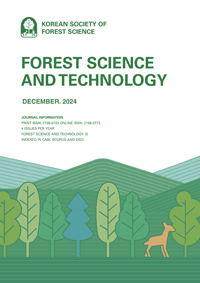Calophyllum inophyllum is a superior choice for sustainable biodiesel production. This tree is highly productive, adaptable to various land types, and has a significant potential for carbon sequestration. This study aimed to determine carbon storage variation in biomass, litter, and soil among C. inophyllum provenances from eight islands in Indonesia; identify the best allometric model for estimating total plant biomass carbon stock; and assess the impact of soil physicochemical properties and litter fiber content on total carbon stock. Plant, litter and soil samples were purposively selected from a total of 32 sample points of 8 provenances. Analysis of variance was carried out to determine variations among provenances on carbon storage in plant biomass and its components (stems, branches, twigs, leaves, stumps, and roots), in litter, as well as in soil organic carbon. The best allometric equation was selected to estimate the total plant biomass carbon based on the value of coefficient determination (R2) and RMSE (Root Mean Square Error). Redundancy Analysis (RDA) was carried out to determine the effect of the soil physicochemical properties and litter fiber content on total biomass carbon and total soil organic carbon followed by a partial analysis (Variation Partitioning Analysis). The results of this study showed that variations on carbon storage in plant biomass and its components, in litter, as well as in soil organic carbon were not significantly different among the provenances. The tBC averaged 13.46 tons ha−1, the litter carbon 4.75 tons ha−1, and tSOC 75.91 ton ha−1 with most biomass carbon stored in trunks (31.02%) and most of carbon stock was stored as tSOC (81%). Quadratic (tBC = 0,4172DBH2 - 1,3433DBH + 2,3498) was the best allometric model for estimating carbon storage on plant biomass with diameter at breast height (DBH) as a predictor variable. Most of the variation in total carbon stock was influenced by soil chemical properties (76%) followed by soil physical properties (11%) and litter fiber content (5%). This study implies that the development of C. inophyllum in Indonesia for carbon storage may utilize seeds or planting materials from any origin, disregarding provenances. Applying organic and/or mineral nutrients (N, P, and K) will increase carbon stock in C. inophyllum plantations. This study underscores the significance of assessing C. inophyllum carbon stocks to enhance its role in establishing climate change policies and promoting sustainable resource management.
DOI:
https://doi.org/10.1080/21580103.2024.2438605
Puntuación Altmetric:
Dimensiones Recuento de citas:



















